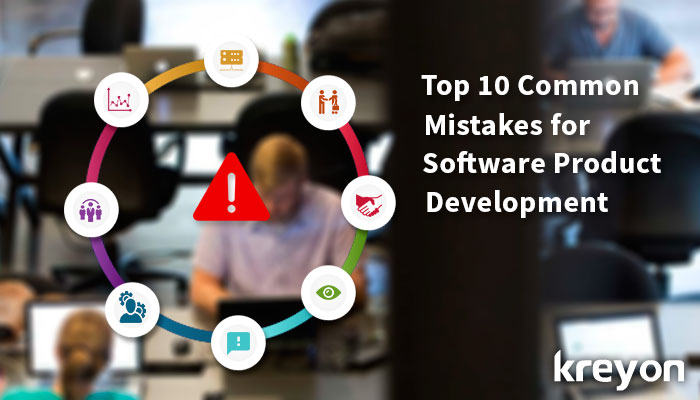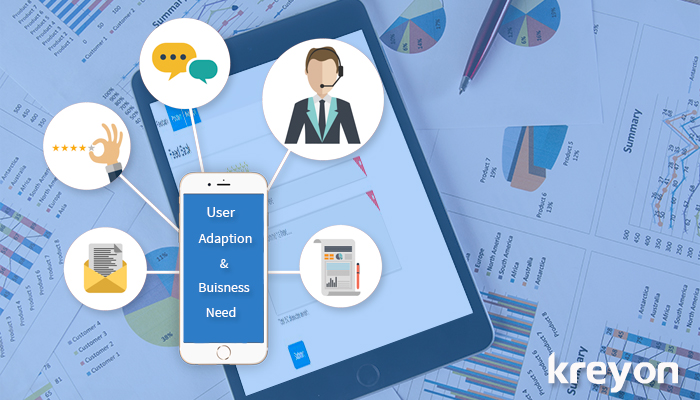Top 10 Common Mistakes for Software Product Development

Most software products fail to capture the pulse of the market. The market is full of mediocre products. Even companies like Google, Microsoft and Apple fail with many of the software products they build. Google Notebook, Microsoft Zune and Apple Maps are just a few to name.
Software products fail for various reasons. Technology advances rapidly. Products need to keep pace with the changing consumer demands and technology. A lot of times this transition is not easy and infact proves to be fatal for products. Google Notebooks is an example of a product that was designed to work for the PCs and laptops, but didn’t quite adapt well with the mobile devices. The product was later discontinued. Here we look at common software product development mistakes & how to avoid them:
1. Market Need :
Software products that do well serve a pressing need for their customers. A half baked product that doesn’t take care of the complete business process automation is seldom useful. The products that typically succeed solve real and important problems for their customers. Before you launch the software product, you need to answer:
Does your product solve a real problem for the customer?
Are people willing to pay for the product?
What are the barriers to the product adoption & how to mitigate them?

2. Technology Changes :
Building a software product is easy. Keeping pace with the technological changes is hard. Even the best of companies regularly shelve many products due to technological developments. A software product becomes irrelevant rather quickly when it is not constantly updated. The consumers today demand products that keep pace with the latest technological advancements.
3. User Adoption & Business case :
User adoption and feedback is very important in shaping a software product. A lot of companies spend far too much time in brainstorming and creating products that seldom meet customer needs. You cannot force users to adopt the product. They automatically do it when the product solves a problem and fills their business needs.

4. Long Term Vision :
Software product development efforts need to be planned for long-term. The initial launch can be supported with basic features that are critical for customers. The long-term vision and roadmap for the product should drive the ongoing developments. The customers don’t buy the software products; they buy the vision you have for the customer. The phased releases for the product & long-term developments can be communicated to the customers for winning their confidence and trust.
5. Understanding Competition :
A software product has to offer tangible benefits for the consumers. The customers today have more options than you imagine. So, an indepth understanding of the markets, competitive products and their offerings is crucial to winning customers. When customers understand your product and its value, they will prefer it over your competition.

6. Customer Feedback is Not Always Welcome :
Creating a software product is a complex task. Customer feedback is always appreciated, but sometimes it might not be feasible to incorporate it in the product. A software product can be used by many customers at once. Assessment of the feedback is vital, not all changes make the product better. They may not add great value for all customers. Too many changes and random requirements can kill a good product.
7. Consistent Benchmarking & Upgradation :
Customers want the best products. A company has to spend significant efforts in understanding the product roadmap and its future by constant benchmarking. A lot of research and analysis goes into improvement of products. The best products are developed using the latest technologies and upgraded constantly to create superior experience for the customers.

8. Support & Sustainability :
A software product has to provide top notch support and sustainability for its users. Companies need to plan meticulously ways to provide support to their customers. With the digital technology, it has become easier to serve customers and cater to their needs. To create sustainable software products, teams often work on multiple versions of the product. The phased releases of the product ensure upgradation, sustainability and stability of the product.
9. Strong Team :
The speed of development, efficiency and quality of the product is determined by the team working on it. A strong and stable team is paramount to creating stellar software products. They understand the breadth and depth of the product. When teams move on, it is harder to manage legacy code and maintain the quality of the product. The same product can have high variability in terms of its quality when development teams change. Great products are built by teams that put their heart and soul into creating them.

10. Results & ROI :
A successful software product has a great ROI. A good software product can be scaled up to serve more customers globally without significant development costs. Once the market viability of the product is assured for the investors, the returns on software product can be quite impressive. Investors typically seek to invest in products that can offer them 5X+ return on successful exits, a successful software product can do that for them.
The world will be driven by more software products in the future. Whether it is artificial intelligence or intelligent automation, the future belongs to companies that are driven by technology. Building great software products requires deep commitment, passion and relentless efforts. Creating software products that solve problems for customers across the globe is a great way to create a valuable business.
Kreyon Systems is a software company with great expertise in software product development like CRM development, digital document management & ERP Software implementation. If you need any assistance or have queries, please get in touch with us.
